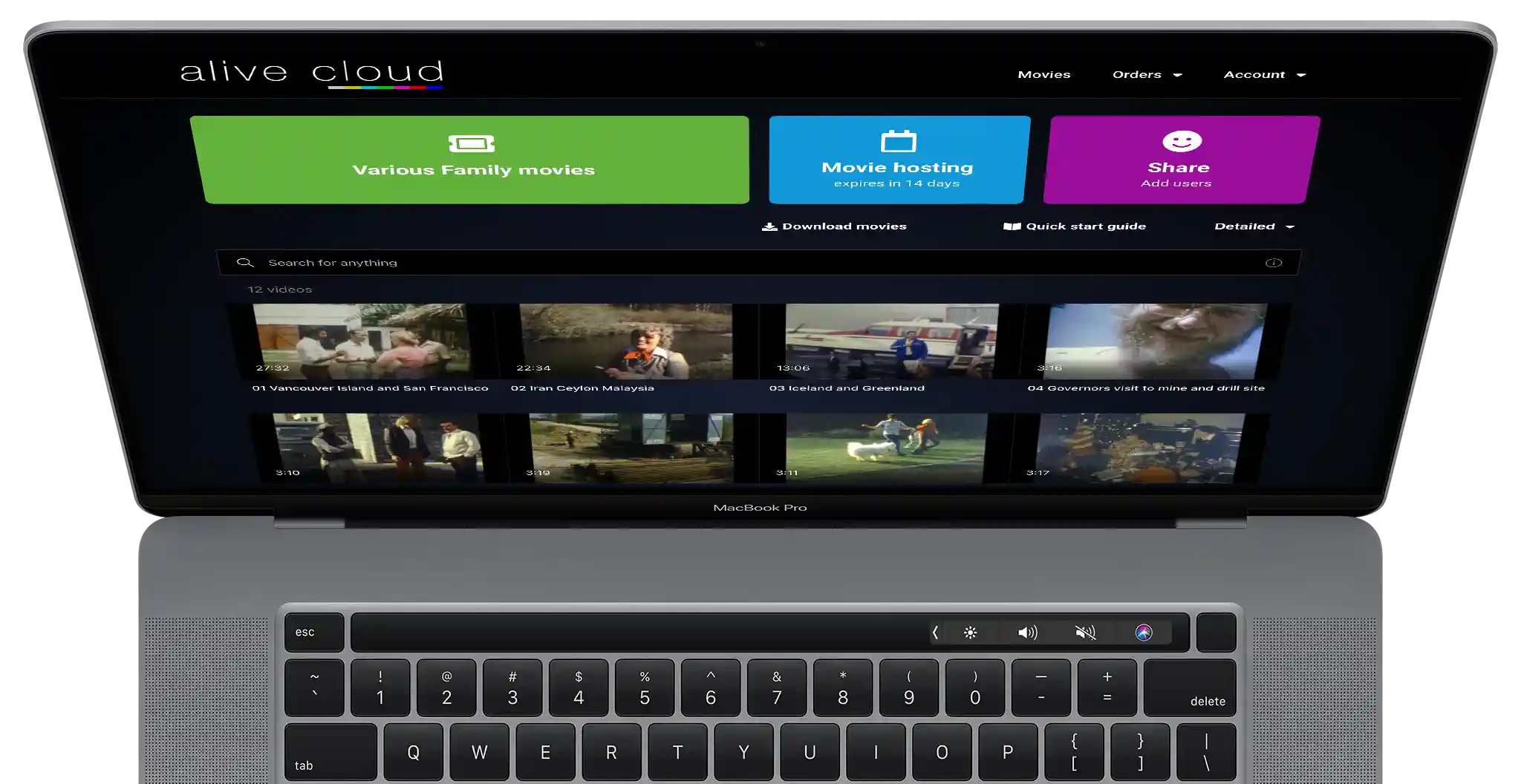info on Analogue Video Tape
- VHS
- Beta
- Video8
- Other
VHS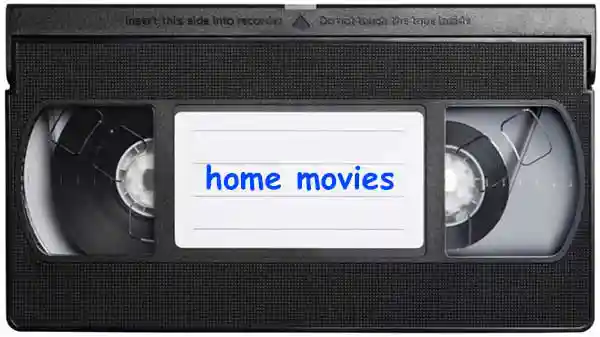
The Japanese Victor Company (JVC) introduced video home system (VHS) recorders in opposition to Sony in the late 1970’s. However, they had the foresight to let other manufactures produce VHS products under licence, including both recorders and video tapes. This gave them a superior advantage in the domestic market place and the main reason VHS machines quickly became the standard home video recording system worldwide. The format uses ½” tape, with the control track across the bottom edge and mono sound track placed immediately above the control track. Initially, when hi-fi sound was introduced, this was achieved by splitting the mono track in two, with left and right channels.
However, hi-fi sound was very quickly replaced with the development of Nicam stereo, which has the sound basically recorded into the space between each picture frame. The only disadvantage of this system is that once you have recorded the sound with your picture, it cannot be altered or added too without editing or copying a tape, unless you use the mono sound track.
The cassettes measure 187 x 102 x 25 mm
Compact-VHS (VHS-C)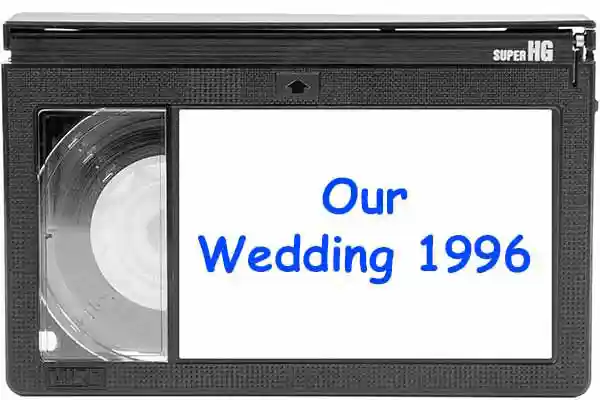
In the mid 1980’s, when camcorders started to replace 8mm cine cameras for recording home movies, it quickly became apparent that full sized VHS video tape cameras were too large and bulky and not really practical for the average person to carry around with them. To alleviate this situation, JVC introduced a much smaller camera, with a format known as Compact-VHS or VHS-C. This is a very convenient format and by using an adaptor, you can watch your home movies on a standard VHS video recorder.
The cassettes measure 92 x 58 x 20 mm
Super-VHS (S-VHS)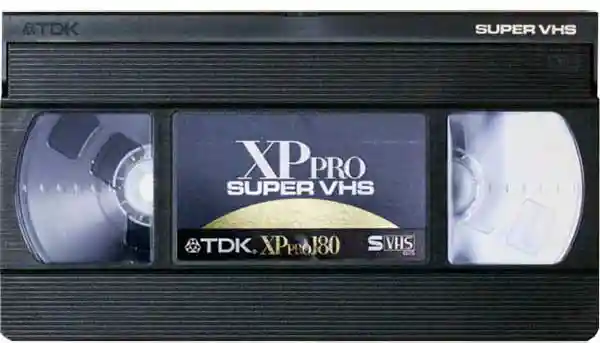
With the ever increasing requisite to edit video filming, without losing too much of the original quality, JVC originally introduced Super-VHS into the United Kingdom market place during 1989. It was originally aimed at the professional and semi-professional markets and was predominantly used by videographers and proved extremely popular for producing wedding videos. By splitting the chrominance and luminance signals Super-VHS delivers an improved picture quality of approximately 75% compared to standard VHS. It also featured the introduction of Nicam stereo sound, a vast improvement on the hi-fi system used in initial VHS camcorders. This enables editing and other special effects to be added to a video film and reproduced to a standard VHS tape, without too much noticeable loss in picture and sound quality.
The cassettes measure 187 x 102 x 25 mm
Betamax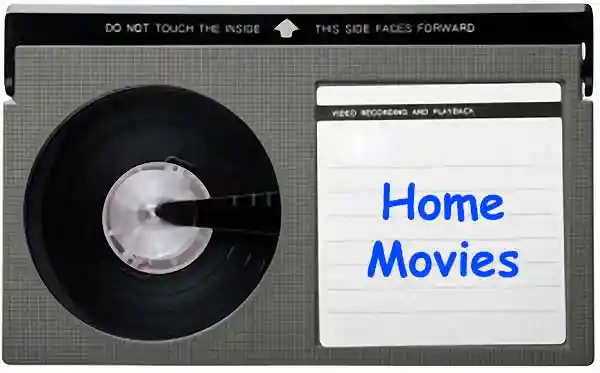
Sony originally introduced Betamax video recorders, the first widely used domestic video recording tape format. But before its eventual demise several other manufactures were granted licenses by Sony to produce Betamax recorders.
The format used ½” tape (the same as VHS), with a mono audio track across the top and the control track along the bottom edge. When the format was later revised to allow for a stereo sound track it was necessary to squeeze both tracks into the original space, which gave disappointing results. Although this was later improved with the development of hi-fi sound, it was too late to make an effect in the market place. Aficionados of Betamax still believe that the picture and sound quality is superior to that of VHS. But eventually VHS overtook Beta in the consumer market, ultimately leading to the almost complete disappearance of Betamax machines and pre-recorded Beta tapes. It is the later, higher quality hi-fi Betamax machines that are used at Alive Studios, so you retain the full original quality.
L125 32 minutes
L250 65 minutes
L500 130 minutes
L750 195 minutes
L830 215 minutes
The cassettes measure 155 x 95 x 25 mm
SuperBeta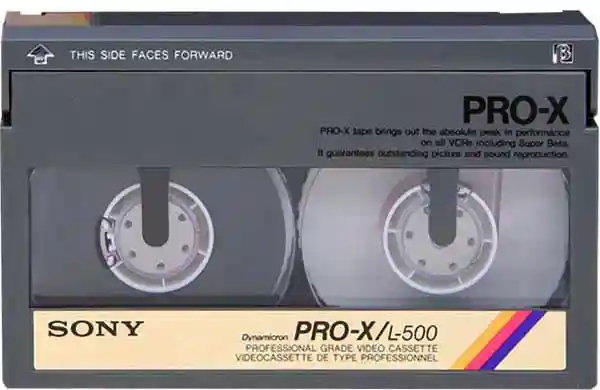
In early 1985, Sony would introduce a new feature, High Band or SuperBeta, by again shifting the Y carrier—this time by 800 kHz. This improved the bandwidth available to the Y sideband and increased the horizontal resolution from 240 to 290 lines on a regular-grade Betamax cassette. Since over-the-antenna and cable signals were only 300–330 lines resolution, SuperBeta could make a nearly identical copy of live television.
The cassettes measure 155 x 95 x 25 mm
Betacam
BetaCam was first introduced in 1982 and initially geared for broadcast use, although there have been some less expensive models destined for industrial use. Pictures you will obtain using a BetaCam system will generally be markedly superior to those you would get using any of the preceding formats. Colours in particular come out looking much more vibrant and objects appear three-dimensional. The superiority of BetaCam comes partly from the technical aspects of the tape format, but also in large part because of the use of superior optics and other components. The difference between BetaCam and BetaCam SP, which was introduced in 1986, is in the tape formulation. BetaCam SP uses a metal tape technology and with further improvements over the original BetaCam soon became the industry standard format.
Tapes are available in two sizes:
Small: cassettes measure 156 x 96 x 25 mm
Large: cassettes measure 254 x 145 x 25 mm
8mm Video (Video-8)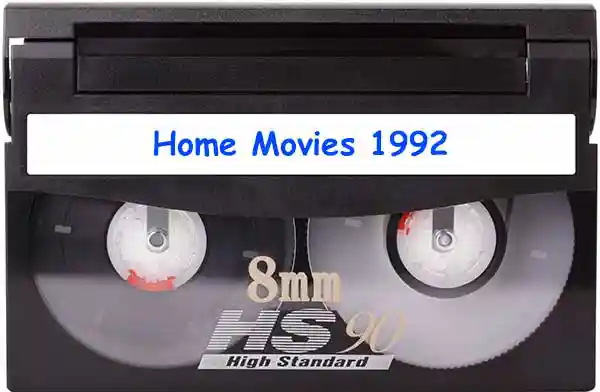
Originally manufactured by Sony, the format was introduced in the mid 1980’s to combat the problem once again of carrying large bulky camcorders. It very quickly proved an extremely popular format with domestic consumers. Camcorders were usually that little bit smaller in size and gave a slightly better picture quality compared to VHS-C format counterpart.
The cassettes measure 95 × 62.5 × 15 mm
Hi8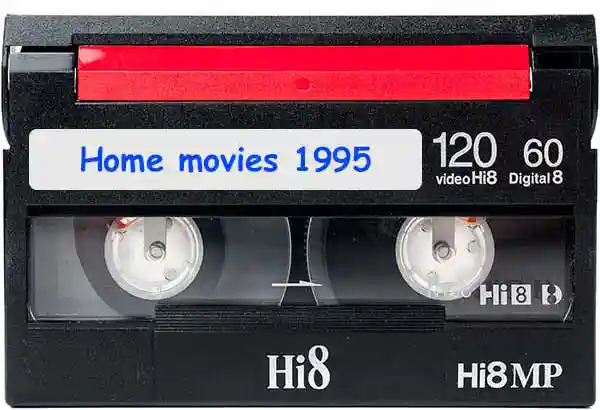
Introduced by Sony as their answer to Super-VHS for the professional and semi-professional consumers. However, due to various factors Hi-8 did not get the same response from videographers. The system initially required the use of metal evaporated tapes, which were relatively expensive compared to Super-VHS tapes and extremely hard to source. The other disadvantage to the professional user was the recording time, with only 30, 60 or 90 minute tapes being available. However, enthusiastic amateurs soon started using the format with the release of metal particle cassettes, which drastically reduced the tape cost.
The cassettes measure 95 × 62.5 × 15 mm
Video 2000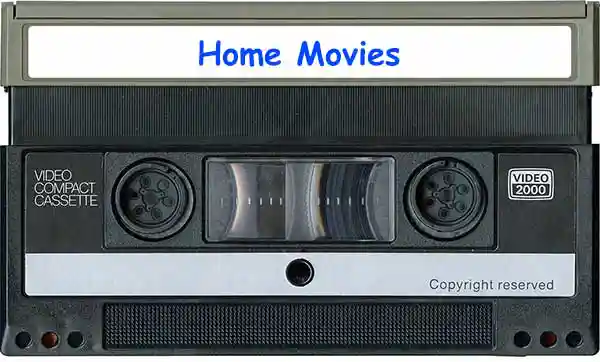
The V2000 system was developed Philips to superceed their NV1500/1700 video system. Perhaps the most widely known fact about the v2000 video system is that it used a cassette which could be turned over allowing recording to be made on both sides of the tape, just like an audio cassette tape
The cassettes measure 187 x 102 x 25 mm
U-Matic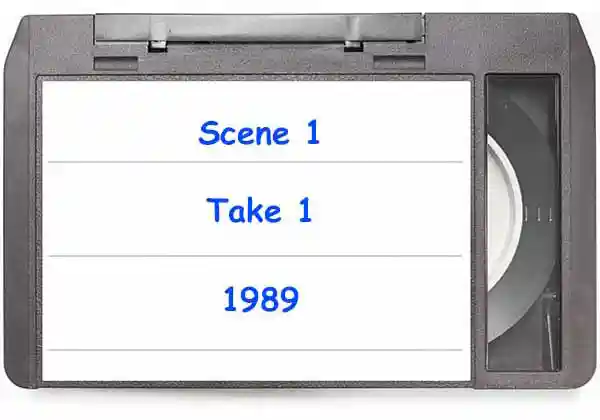
In March 1970, Sony, Matsushita Electric Industrial Co., Ltd., Victor Co. of Japan, Ltd. (JVC), and five non-Japanese companies reached agreement on unified video standard and thus, in 1971 the U-Matic Low Band format was introduced. Also known as 3/4″ video tape, the format soon found favour with the broadcast industry, especially for news gathering.
Although very heavy to carry, this was truly the first complete portable format and no more time waiting for cellulose to be developed. During the years that followed several improvements where made to the format with the introduction of High Band and eventually High Band SP.
Tapes are available in two sizes:
Small: cassettes measure 156 x 96 x 25 mm
Large: cassettes measure 254 x 145 x 25 mm
- VHS
- Beta
- Video8
- Other
VHS
The Japanese Victor Company (JVC) introduced video home system (VHS) recorders in opposition to Sony in the late 1970’s. However, they had the foresight to let other manufactures produce VHS products under licence, including both recorders and video tapes. This gave them a superior advantage in the domestic market place and the main reason VHS machines quickly became the standard home video recording system worldwide. The format uses ½” tape, with the control track across the bottom edge and mono sound track placed immediately above the control track. Initially, when hi-fi sound was introduced, this was achieved by splitting the mono track in two, with left and right channels.
However, hi-fi sound was very quickly replaced with the development of Nicam stereo, which has the sound basically recorded into the space between each picture frame. The only disadvantage of this system is that once you have recorded the sound with your picture, it cannot be altered or added too without editing or copying a tape, unless you use the mono sound track.
The tape measure 187 x 102 x 25 mm
Compact-VHS (VHS-C)
In the mid 1980’s, when camcorders started to replace 8mm cine cameras for recording home movies, it quickly became apparent that full sized VHS video tape cameras were too large and bulky and not really practical for the average person to carry around with them. To alleviate this situation, JVC introduced a much smaller camera, with a format known as Compact-VHS or VHS-C. This is a very convenient format and by using an adaptor, you can watch your home movies on a standard VHS video recorder.
The tape measure 92 x 58 x 20 mm
Super-VHS (S-VHS)
With the ever increasing requisite to edit video filming, without losing too much of the original quality, JVC originally introduced Super-VHS into the United Kingdom market place during 1989. It was originally aimed at the professional and semi-professional markets and was predominantly used by videographers and proved extremely popular for producing wedding videos. By splitting the chrominance and luminance signals Super-VHS delivers an improved picture quality of approximately 75% compared to standard VHS. It also featured the introduction of Nicam stereo sound, a vast improvement on the hi-fi system used in initial VHS camcorders. This enables editing and other special effects to be added to a video film and reproduced to a standard VHS tape, without too much noticeable loss in picture and sound quality.
The tape measure 187 x 102 x 25 mm
Betamax
Sony originally introduced Betamax video recorders, the first widely used domestic video recording tape format. But before its eventual demise several other manufactures were granted licenses by Sony to produce Betamax recorders.
The format used ½” tape (the same as VHS), with a mono audio track across the top and the control track along the bottom edge. When the format was later revised to allow for a stereo sound track it was necessary to squeeze both tracks into the original space, which gave disappointing results. Although this was later improved with the development of hi-fi sound, it was too late to make an effect in the market place. Aficionados of Betamax still believe that the picture and sound quality is superior to that of VHS. But eventually VHS overtook Beta in the consumer market, ultimately leading to the almost complete disappearance of Betamax machines and pre-recorded Beta tapes. It is the later, higher quality hi-fi Betamax machines that are used at Alive Studios, so you retain the full original quality.
L125 32 minutes
L250 65 minutes
L500 130 minutes
L750 195 minutes
L830 215 minutes
The tape measure 155 x 95 x 25 mm
SuperBeta
In early 1985, Sony would introduce a new feature, High Band or SuperBeta, by again shifting the Y carrier—this time by 800 kHz. This improved the bandwidth available to the Y sideband and increased the horizontal resolution from 240 to 290 lines on a regular-grade Betamax cassette. Since over-the-antenna and cable signals were only 300–330 lines resolution, SuperBeta could make a nearly identical copy of live television.
The tape measure 155 x 95 x 25 mm
Betacam
BetaCam was first introduced in 1982 and initially geared for broadcast use, although there have been some less expensive models destined for industrial use. Pictures you will obtain using a BetaCam system will generally be markedly superior to those you would get using any of the preceding formats. Colours in particular come out looking much more vibrant and objects appear three-dimensional. The superiority of BetaCam comes partly from the technical aspects of the tape format, but also in large part because of the use of superior optics and other components. The difference between BetaCam and BetaCam SP, which was introduced in 1986, is in the tape formulation. BetaCam SP uses a metal tape technology and with further improvements over the original BetaCam soon became the industry standard format.
Tapes are available in two sizes:
Small: tape measure 156 x 96 x 25 mm
Large: tape measure 254 x 145 x 25 mm
Video-8
Originally manufactured by Sony, the format was introduced in the mid 1980’s to combat the problem once again of carrying large bulky camcorders. It very quickly proved an extremely popular format with domestic consumers. Camcorders were usually that little bit smaller in size and gave a slightly better picture quality compared to VHS-C format counterpart.
The tape measure 95 × 62.5 × 15 mm
Hi8
Introduced by Sony as their answer to Super-VHS for the professional and semi-professional consumers. However, due to various factors Hi-8 did not get the same response from videographers. The system initially required the use of metal evaporated tapes, which were relatively expensive compared to Super-VHS tapes and extremely hard to source. The other disadvantage to the professional user was the recording time, with only 30, 60 or 90 minute tapes being available. However, enthusiastic amateurs soon started using the format with the release of metal particle cassettes, which drastically reduced the tape cost.
The tape measure 95 × 62.5 × 15 mm
Video 2000
The V2000 system was developed Philips to superceed their NV1500/1700 video system. Perhaps the most widely known fact about the v2000 video system is that it used a cassette which could be turned over allowing recording to be made on both sides of the tape, just like an audio cassette tape
The tape measure 187 x 102 x 25 mm
U-Matic
In March 1970, Sony, Matsushita Electric Industrial Co., Ltd., Victor Co. of Japan, Ltd. (JVC), and five non-Japanese companies reached agreement on unified video standard and thus, in 1971 the U-Matic Low Band format was introduced. Also known as 3/4″ video tape, the format soon found favour with the broadcast industry, especially for news gathering.
Although very heavy to carry, this was truly the first complete portable format and no more time waiting for cellulose to be developed. During the years that followed several improvements where made to the format with the introduction of High Band and eventually High Band SP.
Tapes are available in two sizes:
Small: tape measure 156 x 96 x 25 mm
Large: tape measure 254 x 145 x 25 mm

